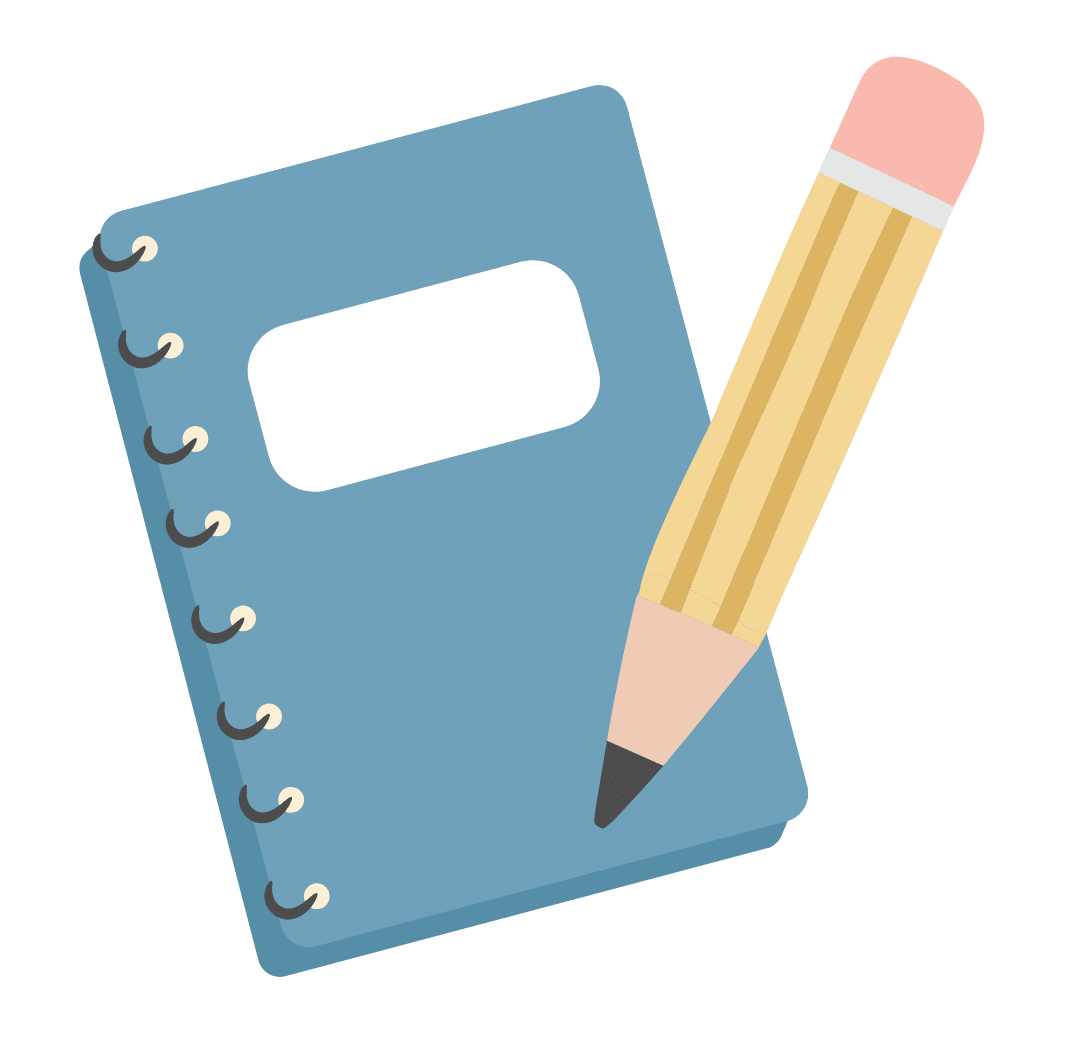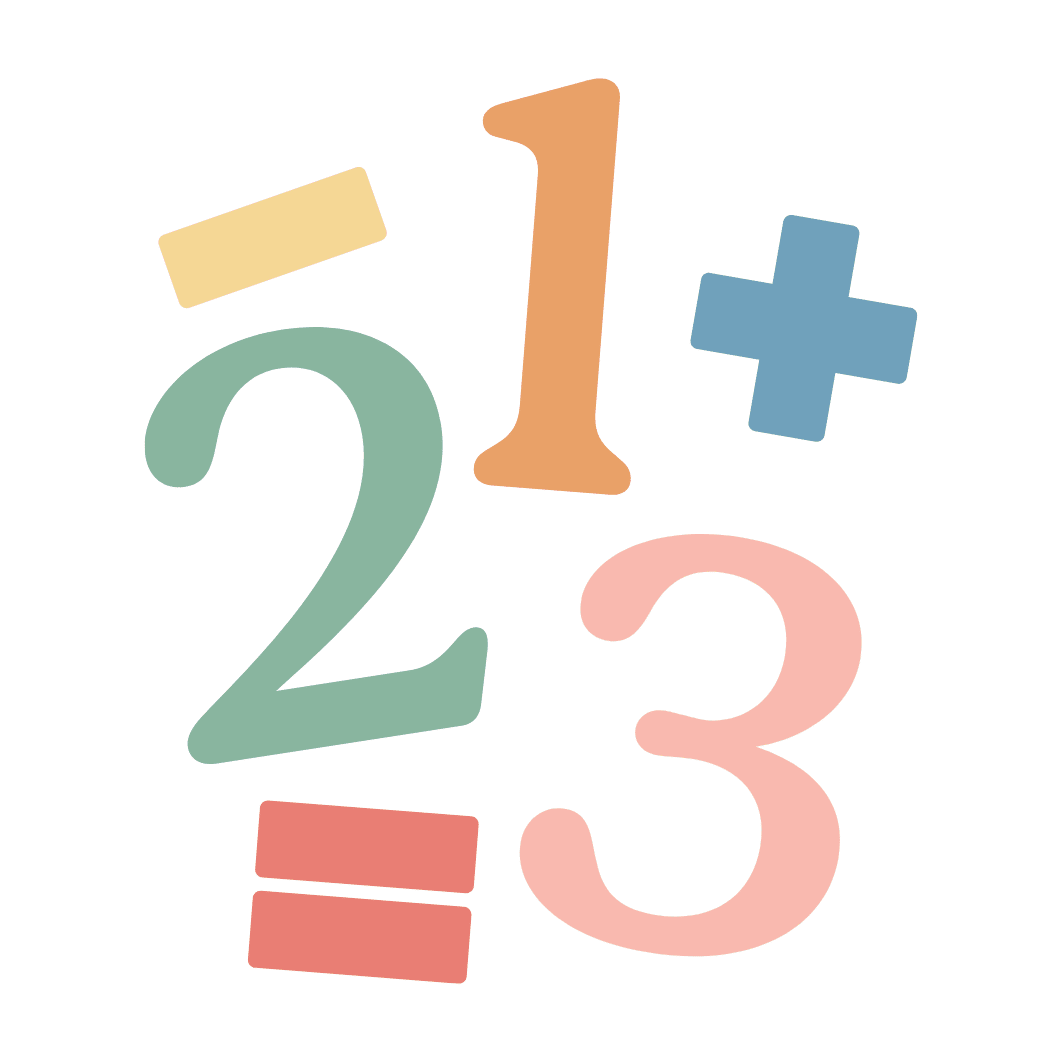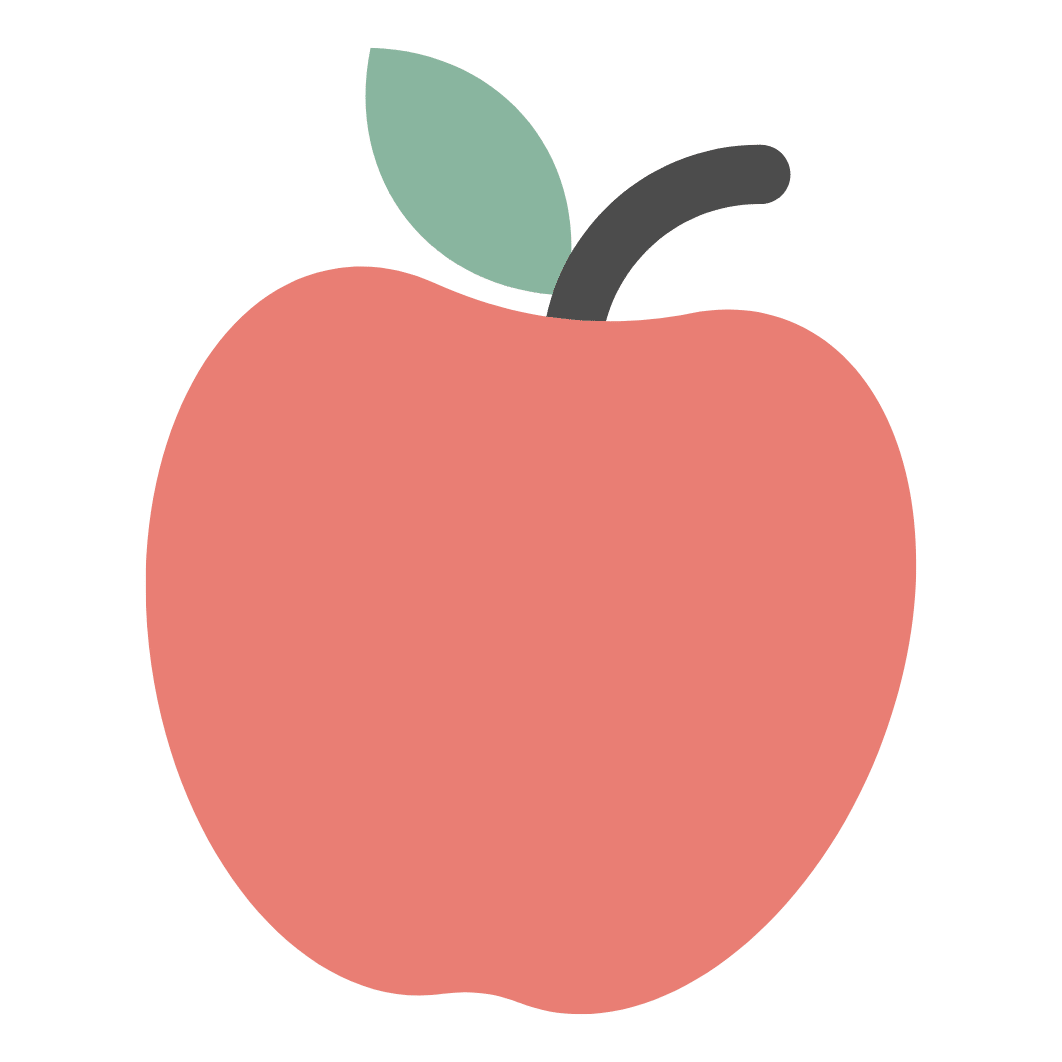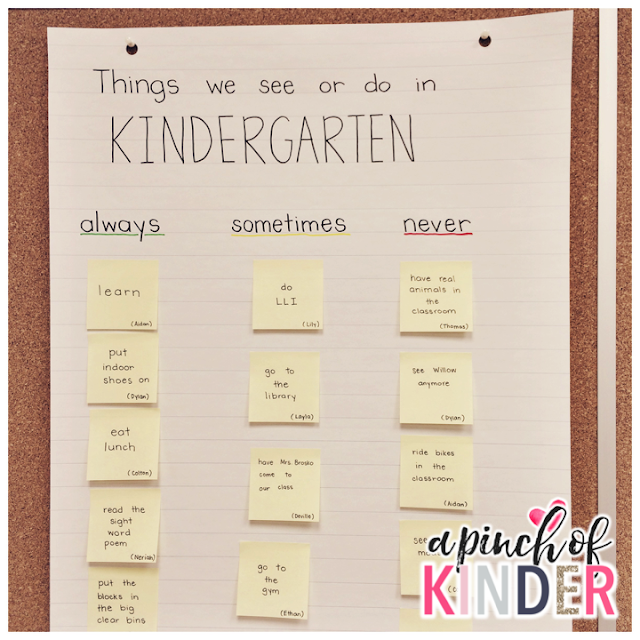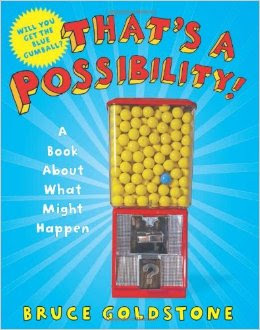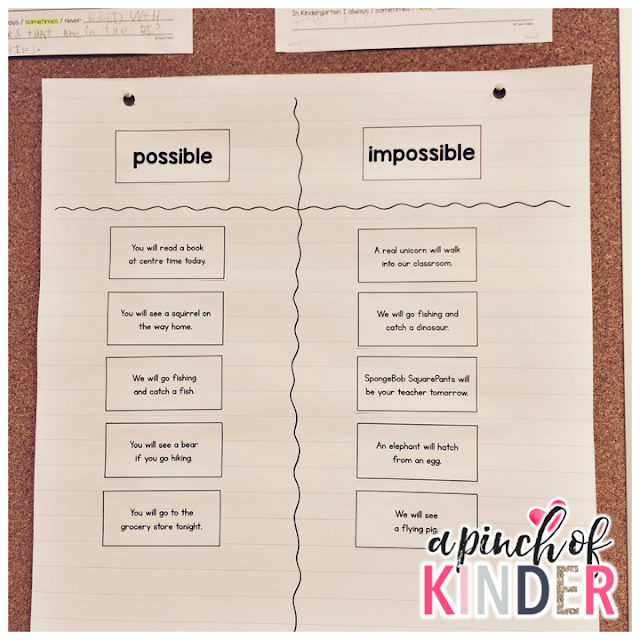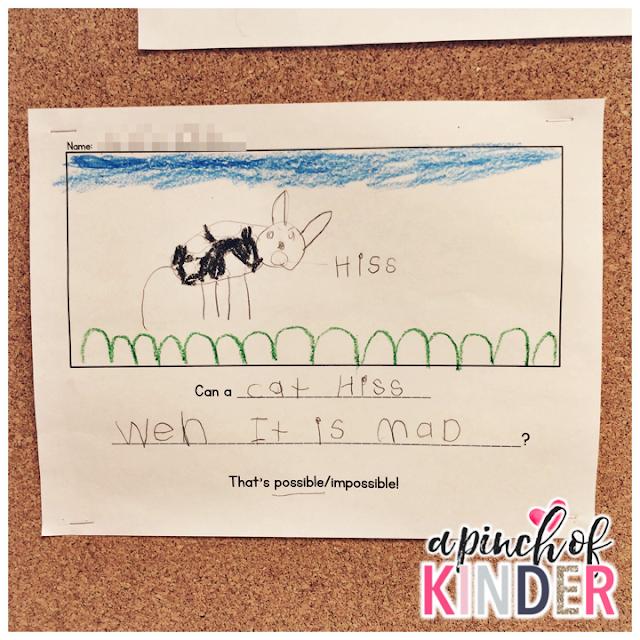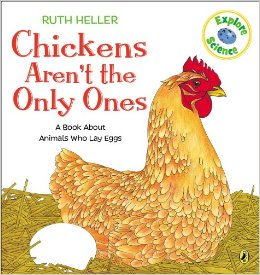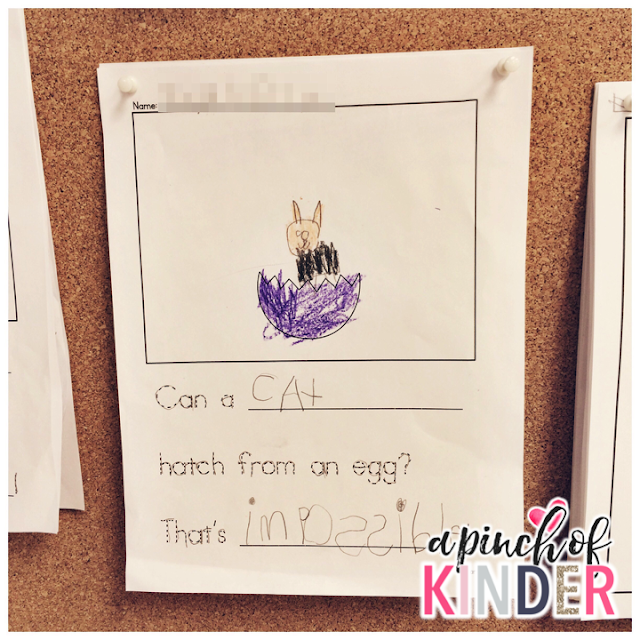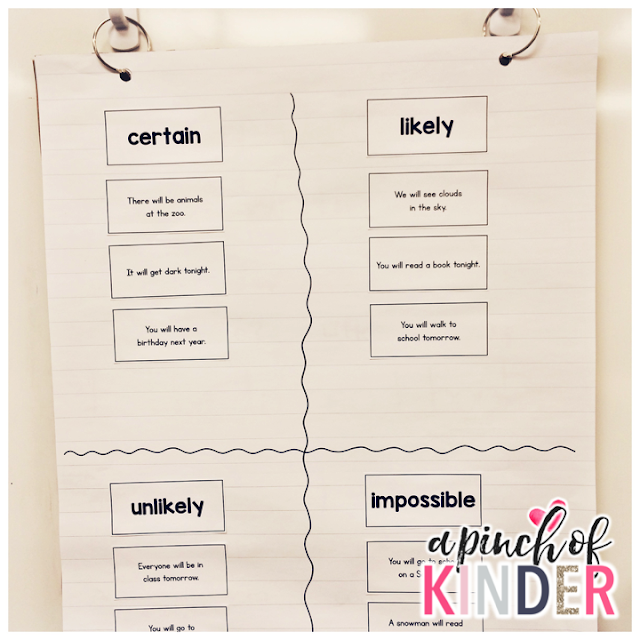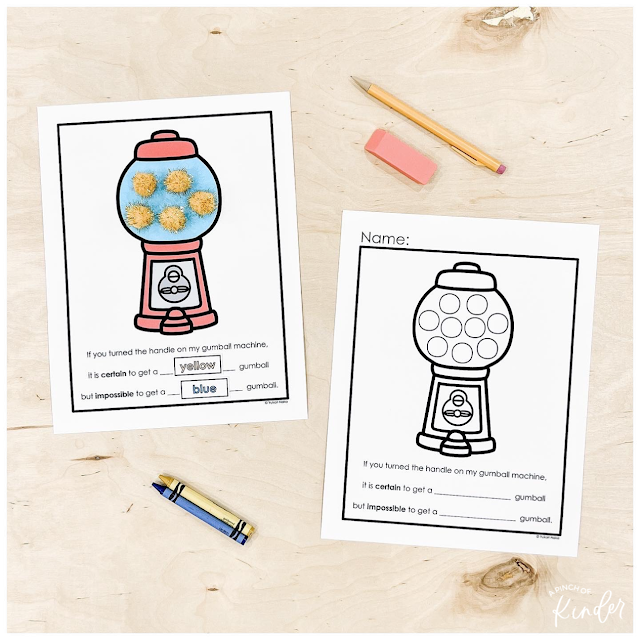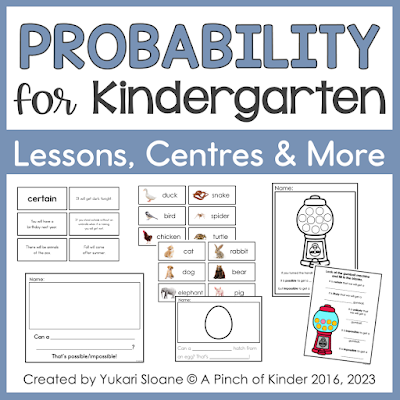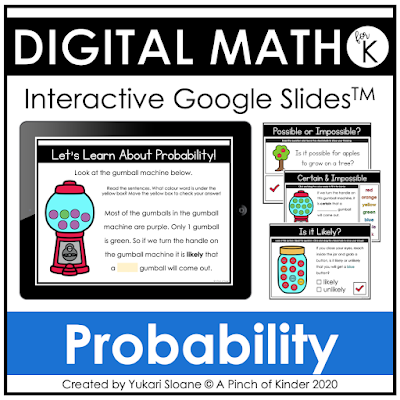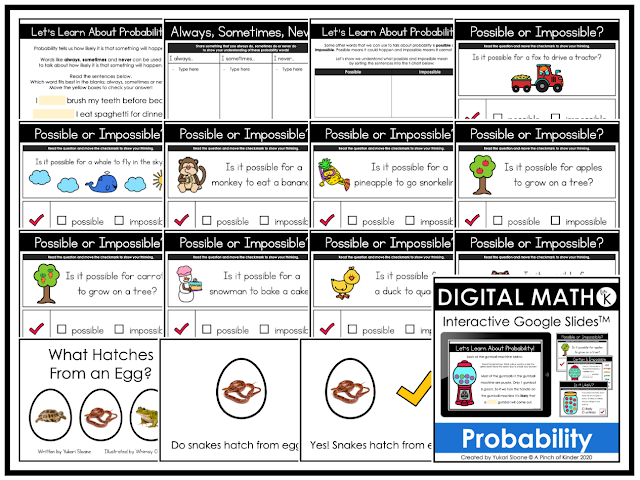Teaching Probability in Kindergarten
share this:
Hi friends!
I’m super excited to share how I taught probability to my class this year!
In the past I was always scrambling around or teaching probability here and there. I finally put together a mini unit and it has helped me be much more intentional about how I teach the probability words this year!
The expectation for probability is:
DM5.4 use mathematical language in informal discussions to describe probability.
Here is an overview of my 6 day unit plan.
Day 1: Introduce probability and the words always, sometimes and never
On the first day I introduce the word probability and teach the students that probability means how likely it is that something will happen.
I also introduce the learning goal and success criteria for the unit.
Then I introduce the first 3 probability words always, sometimes and never.
Next I introduce the anchor chart “Things We See Or Do In Kindergarten”. We brainstorm ideas for things we always do or see, things we sometimes do or see and things we never do or see.
At centre time students complete their own “In Kindergarten I always/sometimes/never _____________” or “In Kindergarten I sometimes __________ but I never _________” sentences on these writing pages.
Here are some examples:
“In Kindergarten I always try my best at all the centres.”
“In Kindergarten I never crawl on the floor.”
Day 2: Possible & Impossible
On the second day I introduce the words “possible” and “impossible”. I read them the first few pages of the book “That’s a Possibility: A Book About What Might Happen” by Bruce Goldstone.
I stop at the pages with the eggs and we move to sorting possible and impossible sentences on a t-chart. I read the sentences and have the students tell me if it’s possible or impossible.
At centre time they have the option to write their own possible/impossible sentence.
I just love this one <3
Day 3: Possible & Impossible #2
On the third day I start by reviewing the page with the eggs in the book “That’s a Possibility!” and I tell the kids that we will be writing our own possible/impossible sentences of things that can and cannot hatch from eggs.
Then I read them the book “Chicken’s Aren’t the Only Ones” by Ruth Heller
to increase their knowledge of what lays/hatches from eggs.
Then at centre time students are able to come and complete this writing activity:
They absolutely loved this writing activity! They continued to do this writing activity for several days after I introduced it.
Day 4: Certain, Likely, Unlikely & Impossible
On the fourth day I introduce the new vocabulary (certain, likely and unlikely) and we sorted the sentences on chart paper.
This was a little tricky! We talked about how some things might be likely for some people but unlikely for others. For example we talked about how most kids in our class walk to school so it is likely that “you will walk to school tomorrow.” However, one of our kids doesn’t come to school on Fridays so for him it would be impossible and a couple of our kids get driven to school so for them it would be unlikely.
Next year I think I will split this up into 2 days and do certain and impossible on one day and likely and unlikely on another.
Day 5: Certain, Likely, Unlikely & Impossible #2
On the fifth day I show them this slide on my SMARTBoard:
and we talk about the gumball machine. We talk about how…
It is certain that we will get a gumball because that is the only thing that is in the machine. It is likely that we will get a yellow gumball because there is a lot more yellow gumballs than pink gumballs. It is unlikely that we will get a pink gumball because there is only 1 gumball. It is impossible to get a green gumball because there are no green gumballs in the machine. It is also impossible to get a dinosaur because there are no dinosaurs in the gumball machine.
At centre time the kids practice making their own gumball machines by colouring in the gumballs on the worksheet below and filling in the blanks. We started with possible and impossible…
Then the next day at centre time we did certain and impossible. For this one I told them that they can only pick one colour since if there was more than one colour it won’t be certain that that colour would come out of the gum ball machine.
The day after that we did the likely/unlikely sheet. For this one I told them to do one gum ball in one colour and the rest of the gum balls in another colour. We talked about how it is not impossible to get the colour of the one gum ball but it is unlikely.
This is my sample…
And this is one that one my kids did:
He asked me if he could do more than 1 red gumball since teal will still be more likely as long as there was more teal than red. I love that this student really got the concept!
These gumball sheets were a HUGE hit! The kids loved making them and I was constantly running out of copies!
(Edited 04.14.23) Here are some updated photos of this activity. The left hand side shows the centre version. I used word cards here but you can also laminate them and have students write in the words with dry erase makers!
And here is a centre version where they can choose from the certain, likely, unlikely and impossible and make their own gumball machine. This one is the hardest because all 4 words are offered.
Day 6: Problem-Solving
On the sixth day we did some problem solving!
I showed them the chart above (not filled in) and a brown paper bag. I told them that there are 5 bears in the bag and that we were going to put our hand in the bag and pull out 1 bear without looking inside the bag. We will record what colour it is. Each student will have a turn to pull out a bear and say what colour they got.
Then we did the activity as I recorded what colour each person got with tallies.
At the end we counted the tallies and recorded the numbers in each column
Then I asked them “There are 5 bears in the bag. How many red bears and how many blue bears do you think are in the bag?”
It was a good chance to review decomposing numbers as some students gave me combinations that did not equal 5. We also talked about how the number of red and the number of blue bears can’t be the same since you can’t put 5 things into 2 equal groups.
We also talked about how it would be impossible to have 0 red bears and 5 blue bears or 5 blue bears and 0 red bears because we know there is at least 1 red and 1 blue bear in the bag (since we saw it come out of the bag).
Some students said that since there were a lot more tallies for red they think there are more red bears than blue bears in the bag.
We recorded our two predictions of the colour combinations below the tallies and then I opened up the bag to show them what was inside. (It was 4 red bears and 1 blue bear).
We talked about how since there were a lot more red bears than blue bears it is more likely to get a red bear than a blue bear when we were pulling them out of the paper bag.
Some years, we broke this lesson into 2 days and did this follow-up activity after day one (we stop after we count the tallies and then do these in small groups during math centres):
Then the next day, we review what we did the day before and students share their thinking!
We also added these probability word cards to our math wall as I taught them for the kids to use at centre time.
You can grab the word cards for free by clicking on the image below!
You can get the printables you see in this post and more in my “Probability for Kindergerten: Lessons, Centres & More” on TPT. Most of what is included is shown below! Here is the link if you are interested in checking it out: https://www.teacherspayteachers.com/Product/Probability-for-Kindergarten-Lessons-Centres-and-More-2542827
I also have a Google Slides version if you prefer that! Most of what is included is shown below! Here is the link if you want to check it out: https://www.teacherspayteachers.com/Product/Digital-Math-for-Kindergarten-Probability-Google-Slides-6653120
What are some of your favourite probability lessons/activities? Please let me know in the comments!
- learning goal
- ·
- math
- ·
- math books
- ·
- math centre
- ·
- math readalouds
- ·
- math wall
- ·
- probability
- ·
- success criteria


